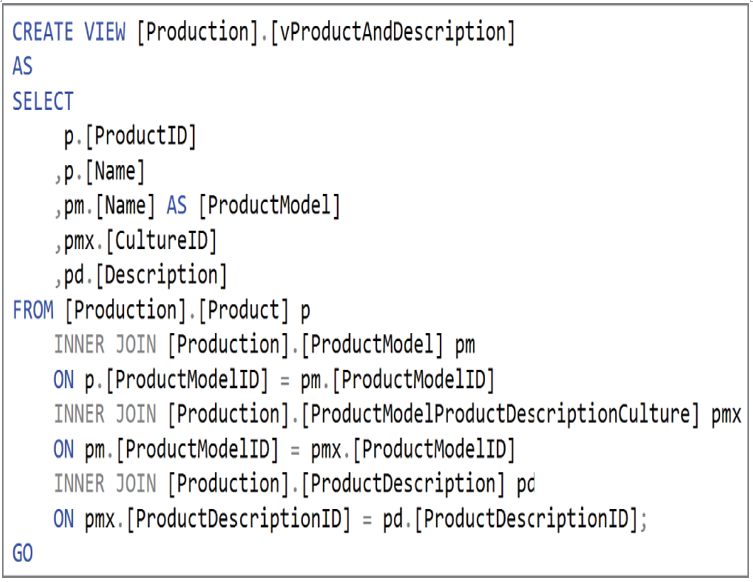Categories
Archives
- July 2024
- June 2024
- May 2024
- March 2024
- January 2024
- December 2023
- October 2023
- September 2023
- August 2023
- July 2023
- May 2023
- April 2023
- January 2023
- December 2022
- October 2022
- September 2022
- July 2022
- June 2022
- April 2022
- March 2022
- December 2021
- November 2021
- September 2021
- July 2021
- May 2021
- March 2021
- January 2021
Views
Views are virtual tables whose contents are defined by a query. The rows and columns of data in a view come from tables referenced in the query that define the view. They act as a virtual layer to filter and combine data from regularly queried tables. Users can simplify their queries since views handle the complex filtering and joining of data that would normally need to be handled by the user. They are also useful security mechanisms as users do not need permission to the underlying tables that make up the views.
Figure 2.3 is an example of a view definition taken from the AdventureWorks OLTP database. This view queries the ProductModel, ProductModelProductDescriptionCulture, and ProductDescription tables to compile a list of products sold and their descriptions in multiple languages.

FIGURE 2.3 View definition
This view allows users querying product description information to simplify their queries from performing joins on multiple tables to only reading from one database object.
A special type of view that can be used to improve the performance of complex analytical queries that are issued against large data warehouse datasets are materialized views. Unlike regular views that are generated each time the view is used, materialized views are preprocessed and stored in the data warehouse. The data stored in a materialized view is updated as it is updated in the underlying tables. Materialized views that are defined by complex analytical queries improve performance and reduce the amount of time required to prepare data for analysis by pre-aggregating data and storing it in a manner that is ready to be used in reports.


Leave a Reply